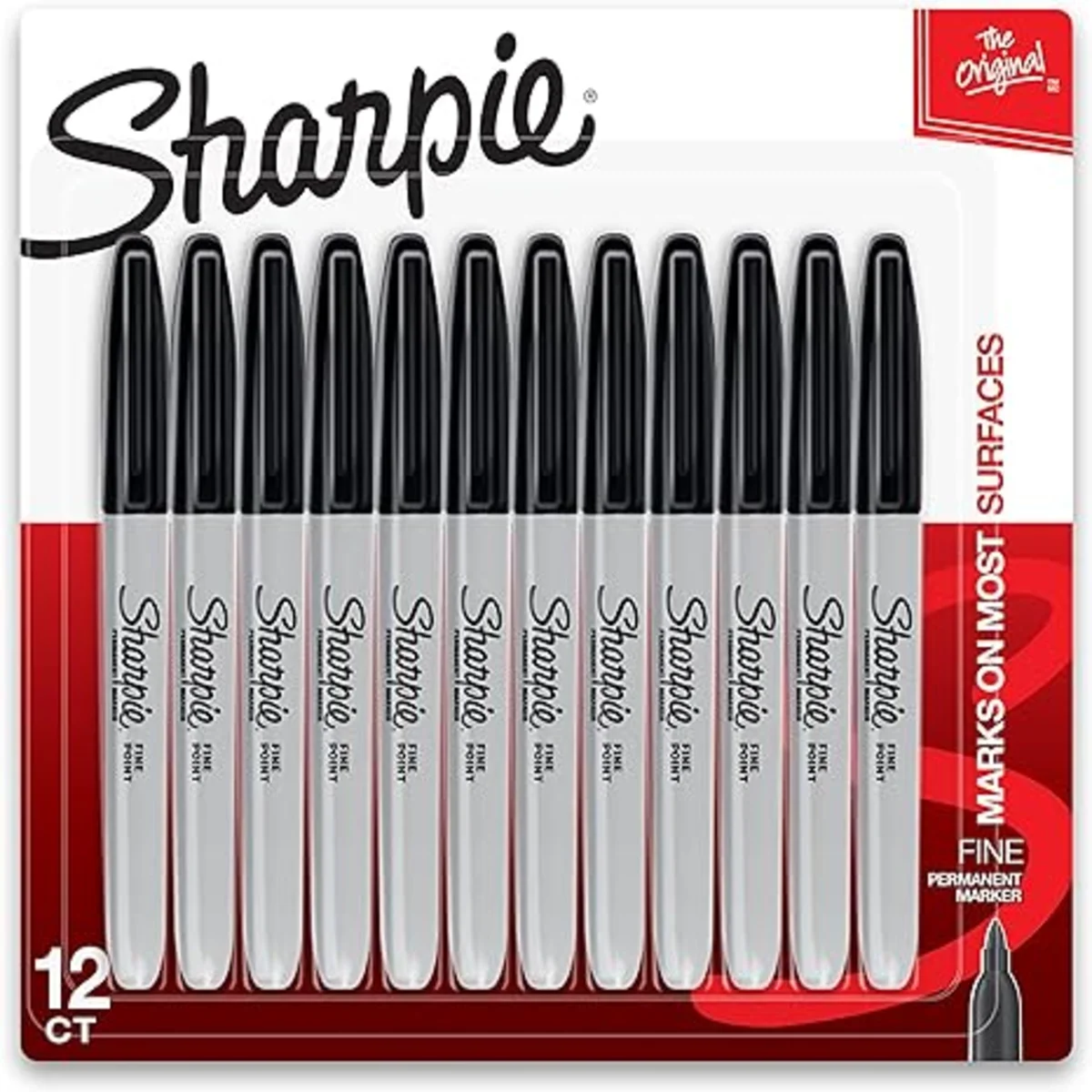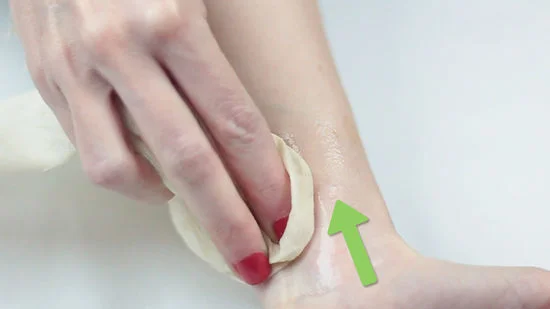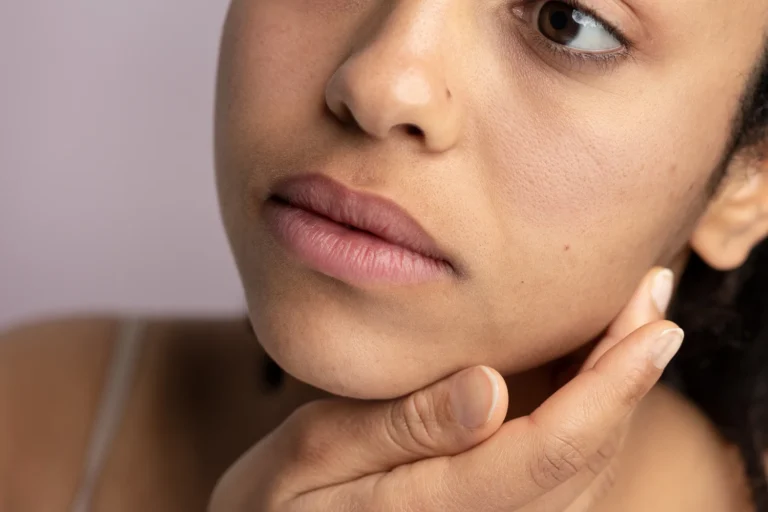How Can You Remove Sharpie Stains from Your Skin?
Have you ever found yourself with Sharpie marks on your skin that just won’t budge? Whether it’s from an artistic mishap or accidentally brushing against a freshly drawn surface, figuring out how to get Sharpie off skin can be quite the puzzle. But fear not! With a few simple household ingredients and some clever techniques, you can say goodbye to those stubborn marks without harsh chemicals or excessive scrubbing. In this guide, we’ll explore some natural solutions to help you remove Sharpie ink from your skin safely and effectively.
Understanding Sharpie Ink
Before we jump into the removal methods, it’s essential to understand what Sharpie ink is made of. Sharpie markers typically use permanent ink, which contains dyes and pigments suspended in a solvent. This solvent is what makes the ink permanent and resistant to water. So, removing Sharpie ink from the skin requires breaking down the bonds between the ink and the skin’s surface.
How To Remove Sharpie Ink From Skin?
Removing Sharpie ink from the skin can be accomplished using various household items and natural remedies. Here are some effective ways to get rid of Sharpie ink stains:
1. Coconut Oil: The Natural Stain Remover
Coconut oil offers a dual benefit: not only does it effectively remove marker stains from the skin, but it also provides moisturization and nourishment. Its ability to adhere to the excess oil on the skin and the ink pigment aid in breaking down the stain without causing irritation. Here’s a step-by-step guide on how to use coconut oil effectively:
- Begin by taking a small amount of coconut oil in your hand.
- Gently apply the oil to the affected area of the skin.
- Massage it in with light circular motions to ensure thorough coverage.
- Allow the coconut oil to sit on the stain for a few minutes to penetrate the ink pigment.
- Wipe it off with a damp washcloth to remove any residual oil and ink.
- Wash away any remaining residue using a gentle cleanser.
- Continue with these steps as necessary until the stain disappears entirely.
2. Lemon Juice: The Natural Bleaching Agent
Lemon juice is a natural and acidic solution that can effectively lighten and remove marker stains from the skin. Its citric acid content helps break down the ink pigment and fade the stain over time. Additionally, lemon juice has natural bleaching properties that can help brighten the skin and promote an even complexion. Here’s a step-by-step guide on how to use lemon juice effectively:
- Press the juice out of a freshly cut lemon into a small bowl or container.
- Dip a cotton ball or clean cloth into the lemon juice, ensuring it’s fully saturated.
- Gently dab the lemon juice-soaked cotton ball or cloth onto the stained area of the skin.
- Allow the lemon juice to penetrate the ink stain for a few minutes.
- Rinse off the area with warm water to remove any residual lemon juice and ink.
- Repeat the process as needed until the stain is lightened or completely gone.
3. Rubbing Alcohol: The Stain Dissolver
Rubbing alcohol is an effective solution for removing marker stains from the skin due to its solvent properties, which help break down the ink pigment and dissolve the stain. It acts quickly to lift the stain without causing irritation, making it a popular choice for stain removal. Here’s a step-by-step guide on how to use rubbing alcohol effectively:
- Begin by applying a modest quantity of rubbing alcohol to a fresh cloth or cotton ball.
- Gently dab the alcohol-soaked cloth or cotton ball onto the stained area of the skin.
- Allow the alcohol to penetrate the ink stain for a few minutes.
- Gently rub the stained area with the cloth or cotton ball, using circular motions to help lift the ink pigment.
- Continue rubbing until the stain begins to fade.
- Rinse off the area with warm water to remove any residual alcohol and ink.
- Keep repeating these steps until the stain has vanished entirely.
4. Baking Soda: The All-Purpose Cleaner
Baking soda is a versatile household ingredient known for its cleaning properties, making it an effective solution for removing marker stains from the skin. Its abrasive nature helps break down the ink pigment and lift the stain without causing irritation. Additionally, baking soda acts as a mild exfoliant, helping to slough off dead skin cells and reveal smoother skin underneath. Here’s a step-by-step guide on how to use baking soda effectively:
- Begin by creating a paste with baking soda and water. Mix a small amount of baking soda with enough water to form a paste with a thick consistency.
- Apply the baking soda paste directly to the stained area of the skin.
- Gently massage the paste into the stain using circular motions, ensuring thorough coverage.
- Allow the paste to sit on the stain for a few minutes to allow its abrasive properties to work on breaking down the ink pigment.
- Rinse off the area with warm water to remove any residual paste and ink.
- Continue with these steps until the stain has completely disappeared.
5. Toothpaste: More Than Just Oral Care
Toothpaste might seem like an unlikely candidate for removing marker stains from the skin, but its abrasive properties and ingredients like baking soda can effectively break down the ink pigment and lift the stain. While toothpaste is primarily used for oral hygiene, its cleaning properties make it suitable for tackling stubborn stains on the skin. Here’s a comprehensive breakdown of effectively using toothpaste:
- Choose a white, non-gel toothpaste for the best results. Gel toothpaste may not be as effective in removing stains.
- Apply a small amount of toothpaste directly to the stained area of the skin.
- Gently massage the toothpaste into the stain using circular motions, ensuring thorough coverage.
- Allow the toothpaste to sit on the stain for a few minutes to allow its abrasive properties to work on breaking down the ink pigment.
- Rinse off the area with warm water to remove any residual toothpaste and ink.
- Continue with these steps until the stain has vanished completely.
6. Vinegar: Harnessing the Power of Acidity
Vinegar is a natural and effective solution for removing marker stains from the skin. Its acidic properties help break down the ink pigment and dissolve the stain without causing irritation. Additionally, vinegar has antibacterial properties that can help cleanse the skin and prevent infection. Here’s a step-by-step guide on how to use vinegar effectively:
- Blend together equal portions of vinegar and water in a small bowl or container.
- Soak a clean cloth or cotton ball in the vinegar solution.
- Gently dab the soaked cloth or cotton ball onto the stained area of the skin.
- Allow the vinegar solution to penetrate the ink stain for a few minutes.
- Rinse off the area with warm water to remove any residual vinegar and ink.
- Continue with these steps until the stain has disappeared entirely.
7. Hand Sanitizer: A Quick and Convenient Option
Hand sanitizer offers a convenient and readily available solution for removing marker stains from the skin. It contains alcohol, which helps break down the ink pigment and facilitates its removal without causing irritation. This method is particularly useful when you’re on the go and don’t have access to other cleaning agents. Here’s a step-by-step guide on how to use hand sanitizer effectively:
- Squeeze a small amount of hand sanitizer onto the stained area of the skin.
- Rub the sanitizer into the stain using your fingertips or a clean cloth.
- Continue rubbing until you notice the ink beginning to dissolve.
- Rinse off the area with warm water to remove any residual sanitizer and ink.
- Continue following these steps until the stain has been fully removed.
8. Banana Peel: Nature’s Stain Remover
Banana peel offers a unique and natural solution for removing marker stains from the skin. It contains enzymes and natural oils that effectively break down ink pigment without causing irritation. Simple and eco-friendly, banana peel is suitable for various skin types. Here’s a step-by-step guide on how to use banana peel effectively:
- Select a ripe banana and peel off the skin, exposing the inner side.
- Gently rub the inner side of the banana peel onto the stained area in circular motions.
- Allow the enzymes and natural oils to penetrate the ink pigment for a few minutes.
- Rinse off the area with warm water, ensuring all traces of the peel and ink are removed.
9. Milk: The Natural Cleanser
Milk is a natural and gentle cleanser that can effectively remove marker stains from the skin. It contains enzymes and proteins that help break down the ink pigment and lift the stain without causing irritation. Additionally, milk has moisturizing properties that can help hydrate and nourish the skin, leaving it feeling soft and smooth. Here’s a detailed guide to effectively employing milk:
- Pour a small amount of milk into a shallow dish or container.
- Dip a clean cloth or cotton ball into the milk, ensuring it’s fully saturated.
- Gently dab the milk-soaked cloth or cotton ball onto the stained area of the skin.
- Allow the milk to penetrate the ink stain for a few minutes.
- Rinse off the area with warm water to remove any residual milk and ink.
- Continue with these steps until the stain has disappeared entirely.
10. Aloe Vera Gel: Soothing and Effective
Aloe vera gel is renowned for its soothing and healing properties, making it an excellent choice for removing marker stains from the skin. It contains enzymes and natural compounds that help break down the ink pigment and gently lift the stain without causing irritation. Additionally, aloe vera gel has moisturizing and cooling effects that can help calm and hydrate the skin, promoting faster healing. Below, you’ll find a comprehensive guide on utilizing aloe vera gel effectively:
- Obtain fresh aloe vera gel from an aloe vera leaf or opt for store-bought aloe vera gel.
- Apply a small amount of aloe vera gel directly to the stained area of the skin.
- Gently massage the gel into the skin using circular motions, ensuring thorough coverage.
- Allow the gel to penetrate the ink stain for a few minutes.
- Rinse off the area with warm water to remove any residual gel and ink.
- Continue with these steps until the stain has been fully removed.
11. Sunscreen: Your Skin’s Protector and Stain Remover
Sunscreen not only shields your skin from harmful UV rays but also serves as a surprisingly effective solution for removing marker stains. Its formulation allows it to interact with the ink on the skin’s surface, facilitating its breakdown and removal without causing irritation. Here’s an easy guide on how to use sunscreen effectively:
- Begin by applying a generous amount of sunscreen to the stained area of the skin.
- Use your fingertips to gently massage the sunscreen into the stain, ensuring thorough coverage.
- Continue rubbing the sunscreen in circular motions until the marker stain begins to dissolve.
- Add more sunscreen as needed, and continue massaging until the stain is fully removed.
- Rinse off the sunscreen and any residual ink with warm water.
- If required, perform the process again until the stain has vanished entirely.
12. Baby Oil or Baby Lotion: Gentle and Effective
Baby oil or baby lotion offers a gentle yet effective solution for removing marker stains from the skin, especially for sensitive areas or delicate skin types. These products are specifically formulated and tested for use on babies’ delicate skin, making them safe for use on adults as well. Here’s a step-by-step guide on how to use baby oil or baby lotion effectively:
- Begin by applying a small amount of baby oil or lotion to the stained area of the skin.
- Use a clean cloth or your fingertips to gently massage the oil or lotion into the stain, ensuring thorough coverage.
- Allow the oil or lotion to sit on the stain for a few minutes to help break down the ink pigment.
- Rinse off the area with warm water to remove any residual oil, lotion, and ink.
- Continue with these steps until the stain has disappeared entirely.
13. Shaving Cream: The Unexpected Stain Fighter
Shaving cream may come as a surprise, but its unique properties make it an effective solution for removing marker stains from the skin. The texture and composition of shaving cream allow it to interact with the ink pigment and break it down without causing irritation. Below, you’ll find an easy guide to effectively utilizing shaving cream:
- Apply a generous amount of shaving cream directly to the stained area of the skin.
- Use your fingertips or a clean cloth to gently massage the shaving cream into the stain, ensuring thorough coverage.
- Allow the shaving cream to sit on the stain for a few minutes to penetrate the ink pigment.
- Rinse off the area with warm water to remove any residual shaving cream and ink.
- Continue with these steps until the stain has vanished entirely.
14. Nail Polish Remover: An Effective Trick
Nail polish remover, which typically contains acetone, can be effective in removing stubborn Sharpie ink stains from skin. However, acetone can be harsh on the skin, so it’s essential to use it sparingly and with caution.
- Dampen a cotton ball or pad with nail polish remover.
- Gently dab the acetone-soaked cotton onto the ink-stained skin.
- Be careful not to rub too harshly, as acetone can irritate the skin.
- Continue dabbing and wiping until the ink starts to lift off the skin.
- Rinse the skin thoroughly with warm water after removing the ink.
15. Soap and Water: An Easy and Simple Way to Remove Permanent Ink from the Skin
The simplest and most readily available method to remove Sharpie ink from skin is using soap and water. This method is effective for fresh ink stains and requires minimal effort.
- To begin, dampen the area in question with comfortably warm water.
- Apply a generous amount of hand soap or dish soap to the stained skin.
- Gently rub the soap into the ink stain using your fingers or a soft cloth.
- Continue rubbing for a few minutes, focusing on the stained areas.
- Rinse the skin thoroughly with warm water until all the soap residue and ink are removed.
How Does Sharpie Ink Affect Your Skin?
When Sharpie ink touches your skin, the chemicals it contains, including xylene, can cause irritation, redness, or allergic reactions. Sharpie ink typically consists of dyes, pigments, and a solvent that aids in its permanence. This solvent facilitates quick drying and adherence to surfaces, including your skin, leading to staining and discoloration. Individuals with sensitive skin may experience itching or a burning sensation. The severity of these reactions depends on factors such as skin sensitivity and exposure duration.
Preventive Tips
While these methods are effective in removing Sharpie ink from skin, prevention is always better than cure. Here are some tips to avoid getting Sharpie ink on your skin in the first place:
- Use gloves or protective barriers when working with Sharpie markers for extended periods.
- Be mindful of where you place your hands when using Sharpie markers, especially if you tend to rest your hand on the paper while drawing or writing.
- Keep a damp cloth or alcohol wipes nearby to quickly clean up any accidental ink stains before they have a chance to set.
- If you do get Sharpie ink on your skin, avoid rubbing or scratching the area, as this can cause the ink to spread or penetrate deeper into the skin.
Conclusion About How to Get Sharpie Off Skin
Removing Sharpie ink from your skin doesn’t have to be a daunting task. With these natural solutions and a little bit of patience, you can say goodbye to those pesky stains in no time. Whether you prefer coconut oil, lemon juice, or rubbing alcohol, there’s a method out there that’s sure to work for you. So, the next time you find yourself with Sharpie marks on your skin, don’t panic—simply reach for one of these household ingredients and watch those stains disappear. Your skin will thank you for it!








